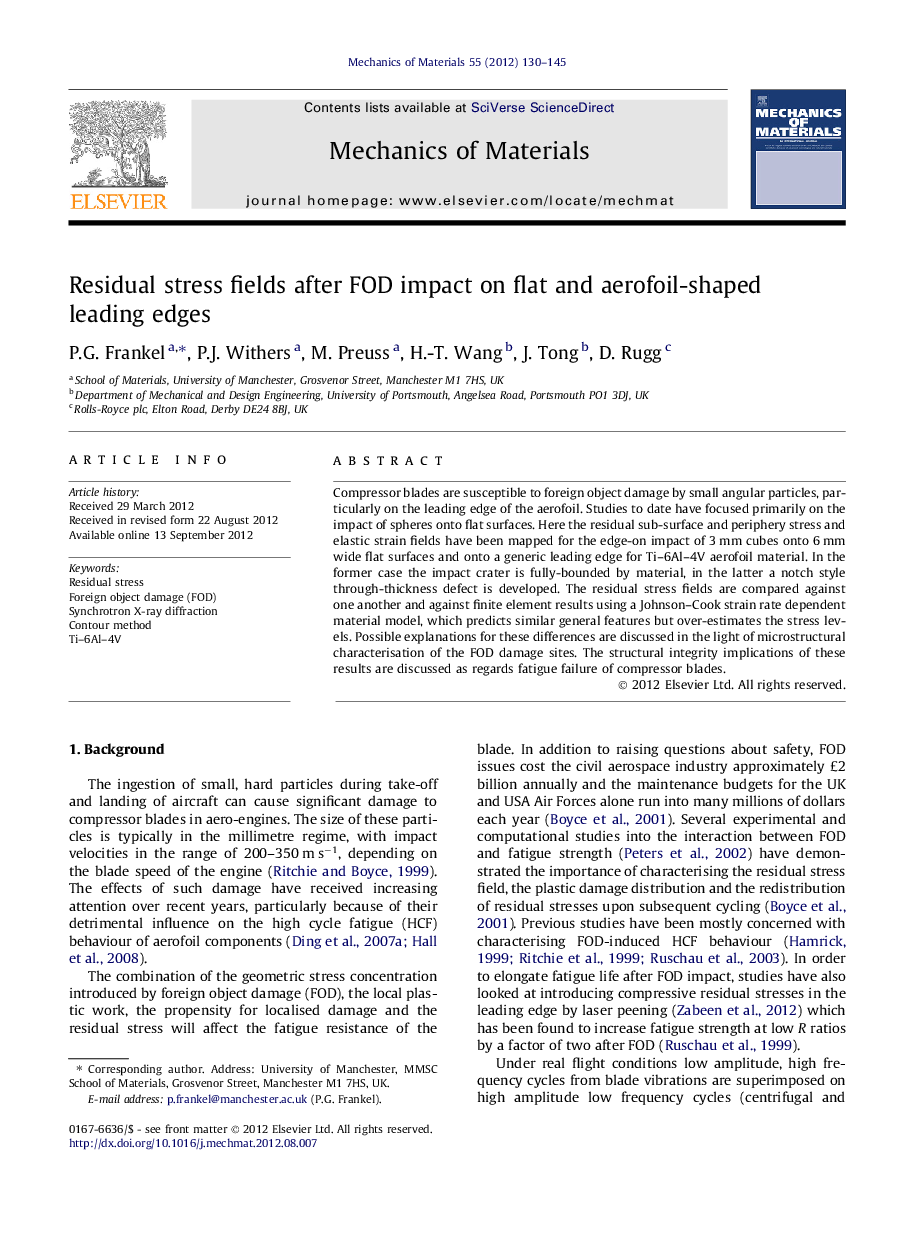| Article ID | Journal | Published Year | Pages | File Type |
|---|---|---|---|---|
| 797619 | Mechanics of Materials | 2012 | 16 Pages |
Compressor blades are susceptible to foreign object damage by small angular particles, particularly on the leading edge of the aerofoil. Studies to date have focused primarily on the impact of spheres onto flat surfaces. Here the residual sub-surface and periphery stress and elastic strain fields have been mapped for the edge-on impact of 3 mm cubes onto 6 mm wide flat surfaces and onto a generic leading edge for Ti–6Al–4V aerofoil material. In the former case the impact crater is fully-bounded by material, in the latter a notch style through-thickness defect is developed. The residual stress fields are compared against one another and against finite element results using a Johnson–Cook strain rate dependent material model, which predicts similar general features but over-estimates the stress levels. Possible explanations for these differences are discussed in the light of microstructural characterisation of the FOD damage sites. The structural integrity implications of these results are discussed as regards fatigue failure of compressor blades.
► Residual stress fields due to foreign object damage on aeroengine compressor blades are investigated. ► High-energy synchrotron X-ray diffraction measures sub-surface strain distributions. ► The contour method provides spatially resolved residual stress analysis. ► Finite element analysis predicts significantly higher stresses than those measured. ► Different stress distributions are observed for two impact geometries investigated.
